Trials conducted at the Centro de Investigación en Alimentación y Desarrollo
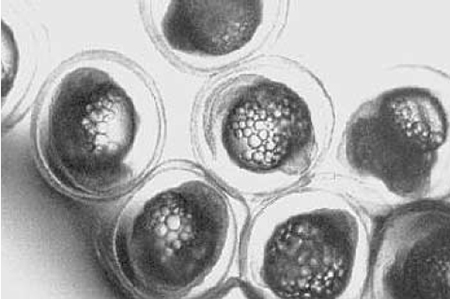
In Mexico, there is significant interest in the culture of various finfish species, including the bullseye puffer (Sphoeroides annulatus), a commercially important fish with aquaculture potential. However, there is limited knowledge of the optimal environmental conditions required during critical parts of its life cycle.
Temperature and salinity are two important factors in both natural and culture environments that affect the development of fish at early life stages. Research on marine fish larvae has demonstrated that some species have considerable age dependent variations in temperature and salinity tolerance.
Experimental setup
The authors recently evaluated the effects of water temperature and salinity on the egg survival and hatching rates of bullseye puffers in a study at the Centro de Investigación en Alimentación y Desarrollo (Center for Research on Feeding and Development) in Mazatlan, Sinaloa, Mexico.
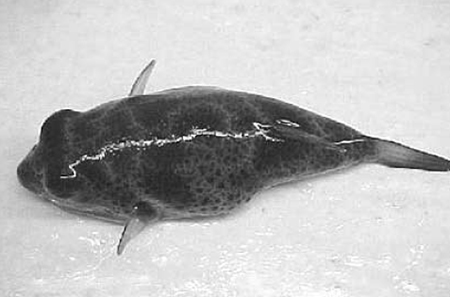
Fertilized eggs were obtained from spawns of seven female and seven male wild-caught broodstock held in captivity. Two types of experiment were run.
In the first trial, eggs were incubated in thermostatically controlled water baths at four constant temperatures. Each bath contained five 200-ml plastic jars. A total of 50 eggs were stuck to each glass slide and incubated in jars at temperatures of 22, 25, 28, and 31 degrees C at 35 ppt. Five replicate slides were included for each treatment.
In the second trial, eggs were incubated in a temperature-controlled room at 28 degrees-C. Fifty eggs were stuck to each glass slide and incubated in plastic jars at salinities of 0 (distilled water) 5, 10, 15, 20, 25, 30, 35, 40, 45, 50, 55 and 60 ppt, each with five replicate slides.
The numbers of dead eggs and hatched larvae were recorded at 24, 48, 72 and 96 hours for temperature treatments, and 72 hours for salinity treatments. Abnormal larvae were noted. All counts were transformed into the arcsin of the percentages prior to analysis.
The data was analyzed by one-way ANOVA and Tukey’s multiple comparisons of means (P < 0.05). The hatching rates of bullseye puffer eggs at different temperatures and salinities are shown in Figs. 1 and 2.
Temperature effects
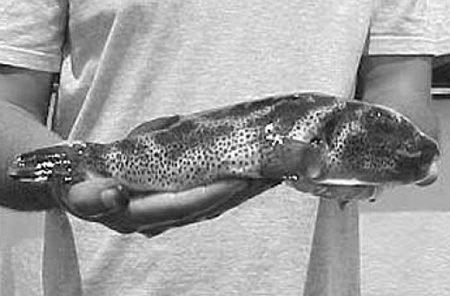
Incubation temperature significantly affected embryonic mortality and hatch survival. Similar observations have been made for other fish species. No eggs survived the first 24 hours at 22 degrees-C in this study. Eggs began to hatch at 48 hours at 25, 28, and 3 degrees-C. At 25 degrees-C, embryo development was retarded when compared to 28 and 31 degrees-C. The hatching rate was also lower at the lower temperature.
Higher temperature (31 degrees-C) resulted in faster development, but also abnormal embryo development. This effect has been observed in other marine fish species, such as the Pacific halibut. In this study, survival to hatching was slightly higher at 28 degrees-C at 96 hours, but no significant differences (P < 0.05) were observed among hatch rates at 25, 28, and 31 degrees-C.
Salinity effects
Salinity affected both egg survival and survival to hatch. No eggs survived when incubated at 0, or 45 ppt or higher salinities. Similar effects of salinity have been observed for other marine fish species like the black bream.
In this study, hatching rates of 10 to 40 ppt were variable. Abnormal larvae were observed at 5, 10 and 40 ppt, and all larvae hatched at 5 ppt died. The highest and most consistent hatch rates were observed in full-strength seawater (35 ppt), but there were no statistically significant differences (P > 0.05) in hatching rates between 5 and 40 ppt.
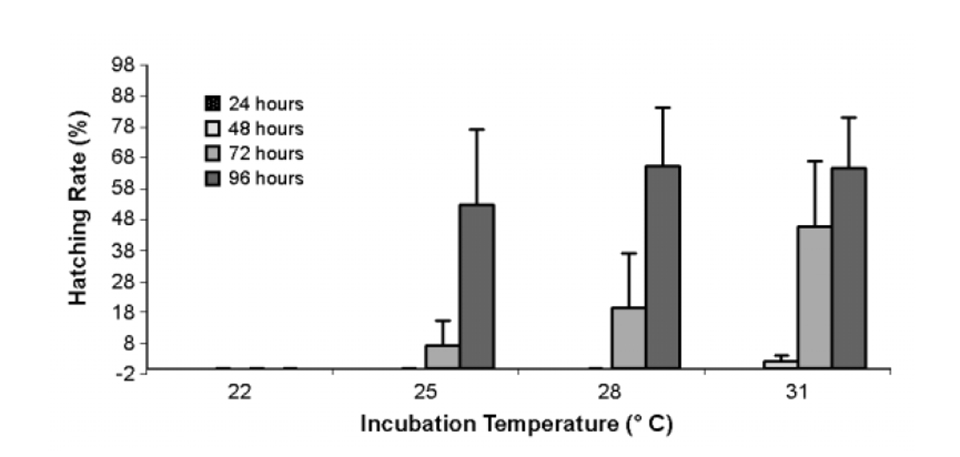
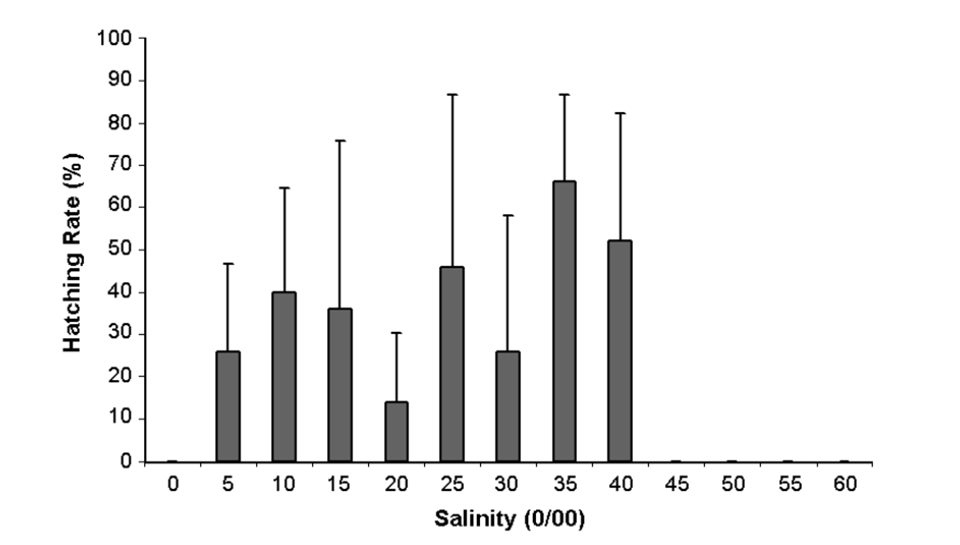
Conclusion
Incubation temperature and salinity significantly affect embryonic mortality and hatch survival of fish. Results from studies with bullseye puffers indicated that maximum hatching rates should be observed at a temperature of 28 degrees-C and salinity of 35 ppt.
(Editor’s Note: This article was originally published in the June 2003 print edition of the Global Aquaculture Advocate.)
Now that you've reached the end of the article ...
… please consider supporting GSA’s mission to advance responsible seafood practices through education, advocacy and third-party assurances. The Advocate aims to document the evolution of responsible seafood practices and share the expansive knowledge of our vast network of contributors.
By becoming a Global Seafood Alliance member, you’re ensuring that all of the pre-competitive work we do through member benefits, resources and events can continue. Individual membership costs just $50 a year.
Not a GSA member? Join us.
Authors
-
Irma Martínez-Rodríguez
Centro de Investigación en Alimentación y Desarrollo,
Unidad Mazatlán
Apdo. Postal 711
Mazatlan, Sinaloa, Mexico C.P. 82010[120,109,46,100,97,105,99,46,97,105,114,111,116,99,105,118,64,97,109,114,105]
-
Blanca González-Rodríguez
Centro de Investigación en Alimentación y Desarrollo,
Unidad Mazatlán
Apdo. Postal 711
Mazatlan, Sinaloa, Mexico C.P. 82010 -
Isabel Abdo de la Parra
Centro de Investigación en Alimentación y Desarrollo,
Unidad Mazatlán
Apdo. Postal 711
Mazatlan, Sinaloa, Mexico C.P. 82010 -
Neil Duncan
Centro de Investigación en Alimentación y Desarrollo,
Unidad Mazatlán
Apdo. Postal 711
Mazatlan, Sinaloa, Mexico C.P. 82010
Tagged With
Related Posts
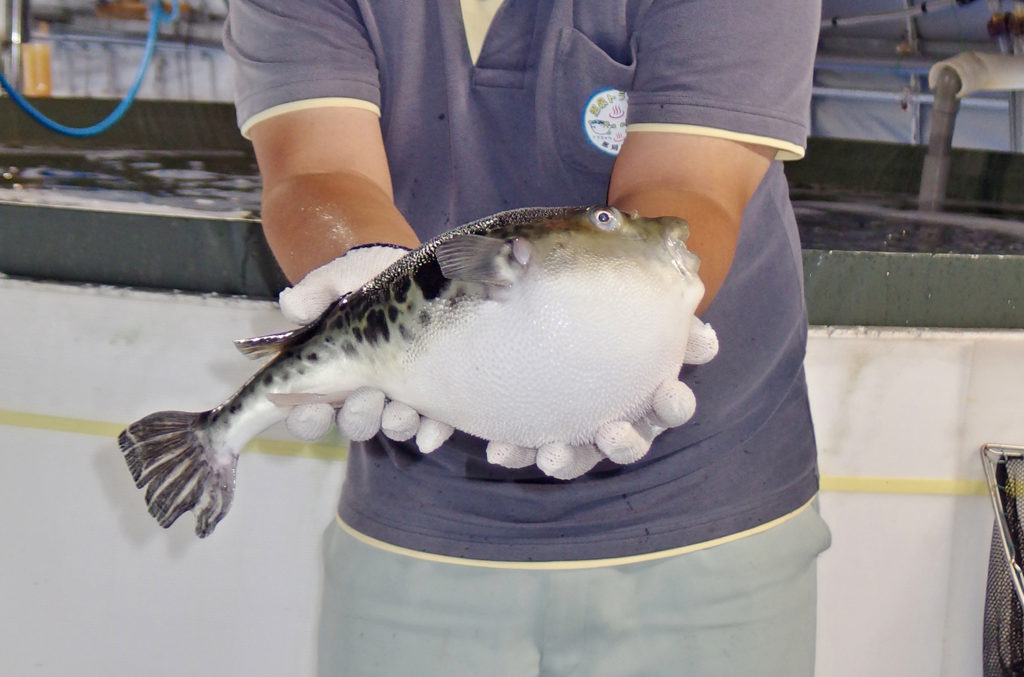
Intelligence
In Japan, tiger puffers find themselves in hot water
A technique to farm tiger puffers in hot spring water was invented to revitalize the town of Nasu-karasuyama and is now spreading to other areas of Japan.
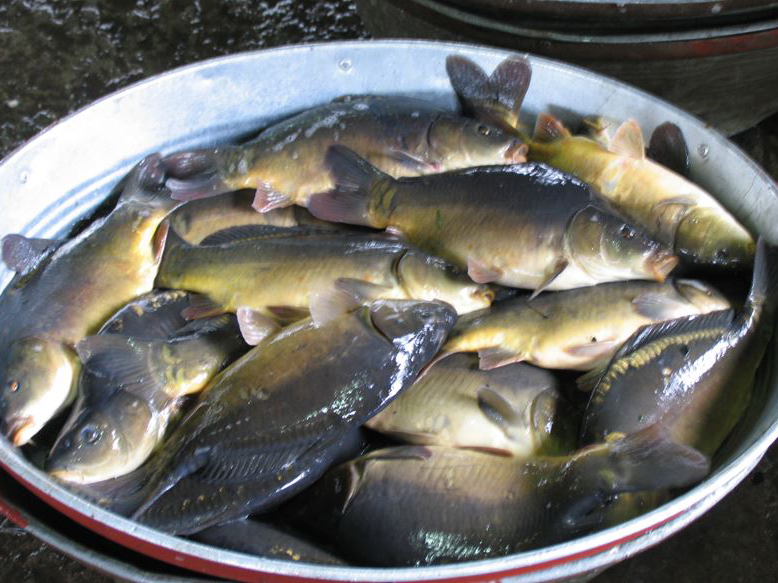
Health & Welfare
Barcoding, nucleic acid sequencing are powerful resources for aquaculture
DNA barcoding and nucleic acid sequencing technologies are important tools to build and maintain an identification library of aquacultured and other aquatic species that is accessible online for the scientific, commercial and regulatory communities.
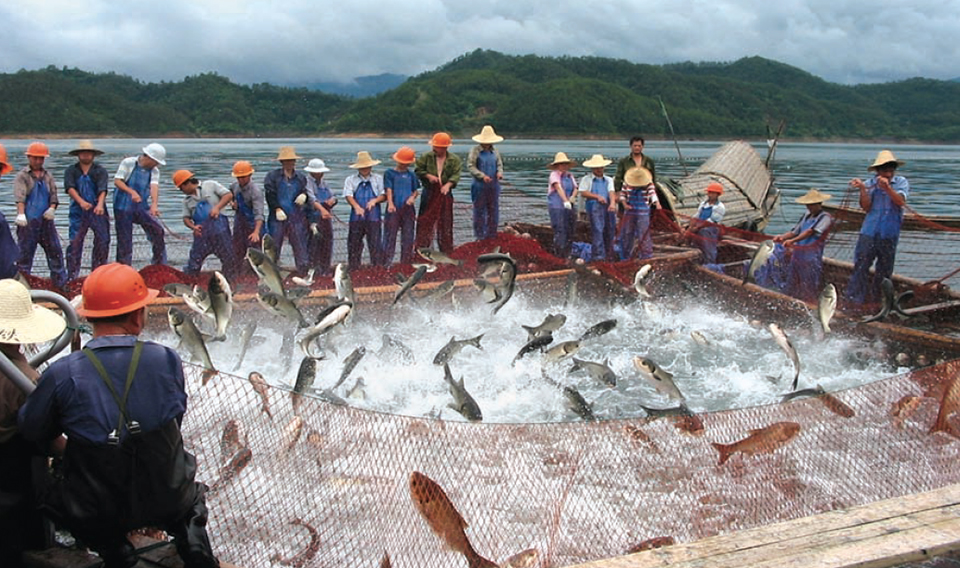
Health & Welfare
Freshwater fish culture in China
About 60 percent of China’s aquaculture production is freshwater fish. Carps top the list, although many other native and non-native species are also raised.
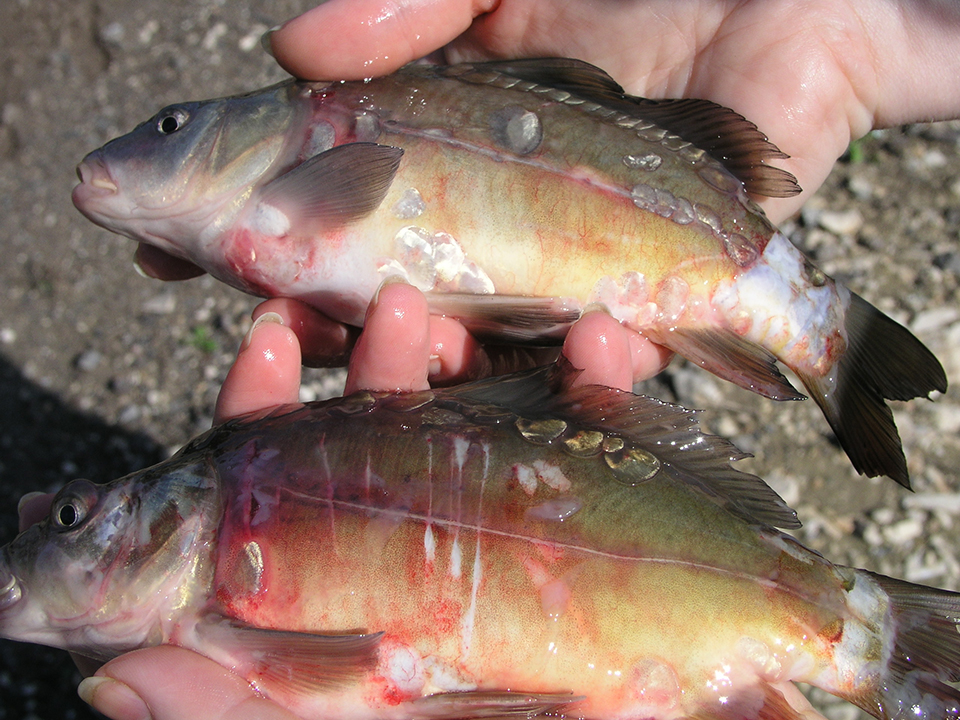
Health & Welfare
Candidate gene markers for selective breeding of CyHV-3-resistant carp, koi
Common carp and koi producers around the world have suffered substantial financial losses due to a contagious disease caused by cyprinid herpesvirus-3.


